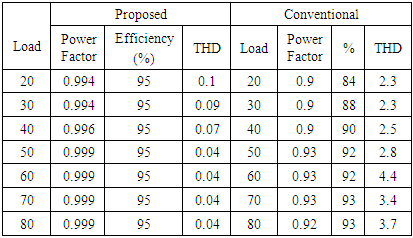

The starting inrush current is bounded without any additional circuitry or control. The power optimization of SPV array and limiting starting inrush current of the BLDC motor are two major functions of the boost converter. This paper deals with the development of a simple, cost-effective, efficient, reliable and eco-friendly water pumping system utilizing a DC-DC boost converter as an intermediate power conditioning unit in solar photovoltaic (SPV) array fed brushless DC (BLDC) motor driven water pump. Keywords-Photovoltaic cell, Power factor correction(PFC) Brushless direct current (BLDC)motor, Bridgeless(BL) buck-boost converter, discontinuous inductor current mode (DCM). This method has high efficiency and low cost as compared with other speed controlling method of BLDC motor and improved power quality is also achieved. As compared with other speed controlling method, speed control of BLDC motor by power factor corrected bridge less buck-boost convertor uses reduced number of components. Power factor improvement is done by designing the converter in discontinuous inductor current mode (DCM). Commutation of the BLDC motor is by using VSI, which reduces the switching losses and it avoid the sparking and wear and tear by mechanical commutation and it is known as electronic commutation. Bridgeless converter reduces the conduction losses in the diode bridge rectifier. Speed control is by controlling the dc link voltage of the voltage source inverter (VSI). And speed control method of BLDC motor with low cost for low power applications can be done by using a power factor corrected bridgeless buck-boost converter. This AC source is the supply for BLDC motor drive. And we can convert this dc from solar panel to single phase AC source by using single phase inverter. Among the all renewable energy resources available, solar energy seems to be a major competitor as it is abundant in nature and also pollution-free. This importance is mainly because of limited resource and environmental problems of the conventional energy. Renewable energy sources have more importance. The experimental results are compared for different inputs and analysed. The proposed fuzzy controlled unidirectional operation of the high-step up MPPT converter is analysed. The ZVS technique further reduces the power loss due to frequent switching. The advantage of the proposed high step-up converter for the MPPT compared to the conventional type are, the output is efficiently increased and regulated by the boost operation. The DC to DC converter is operated at an adjustable duty cycle by the fuzzy logic controller. The fuzzy controlled high step-up converter increases the output voltage from the panel compared to the conventional type.

The converter switching power losses is eliminated by zero-voltage method in this proposed converter. The performance of converter-inverter technology to drive a brushless DC motor is analysed. In this paper, the conventional DC-DC converter is replaced with a High Step-up Converter for the Maximum Power Point Tracking (MPPT) in solar power applications.


 0 kommentar(er)
0 kommentar(er)
